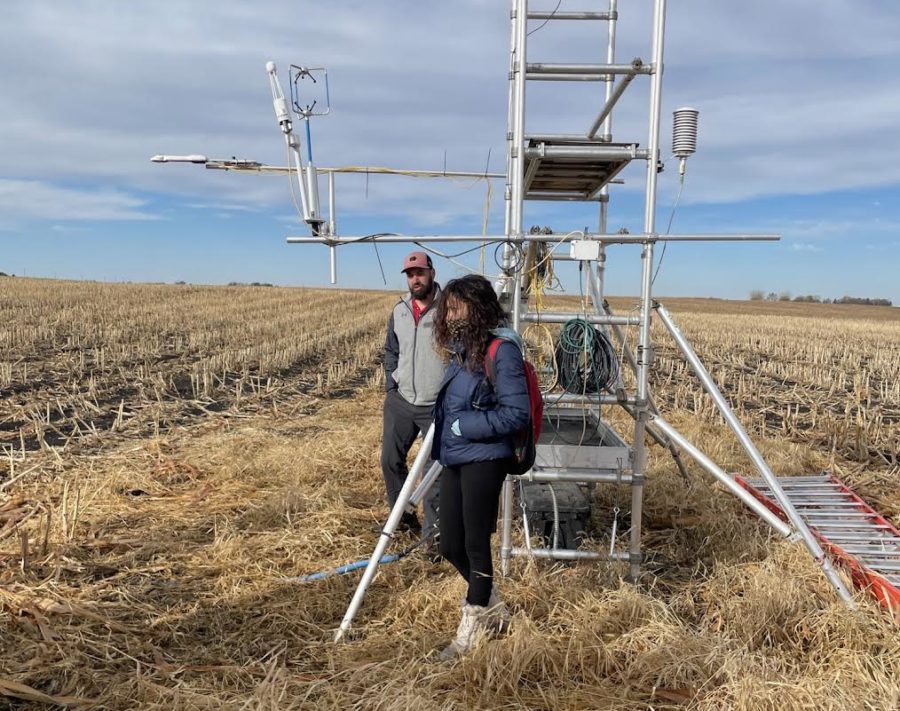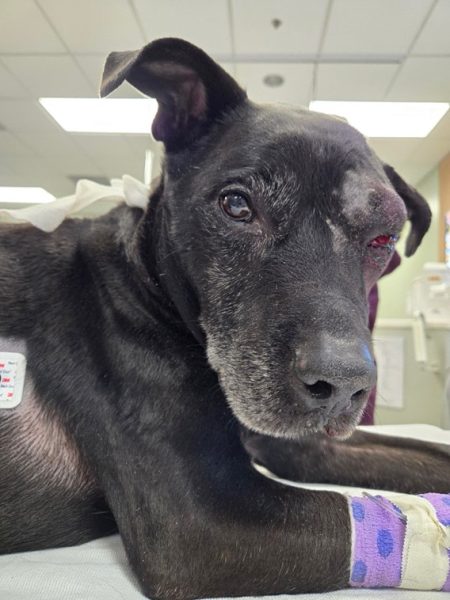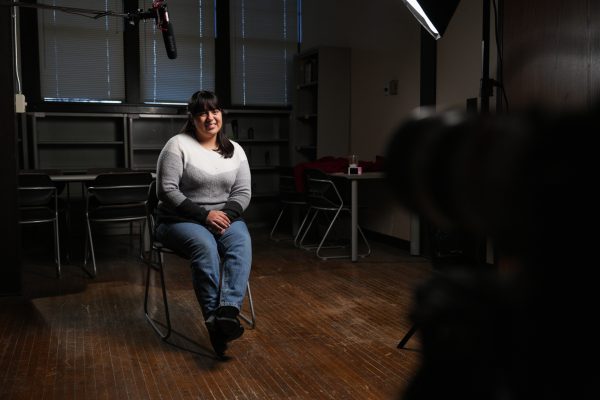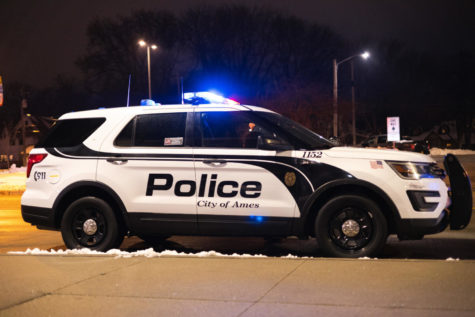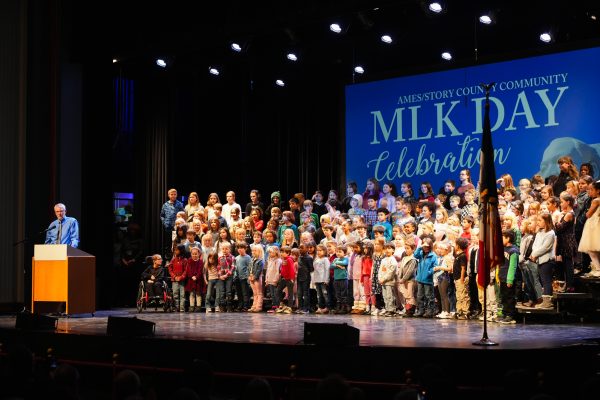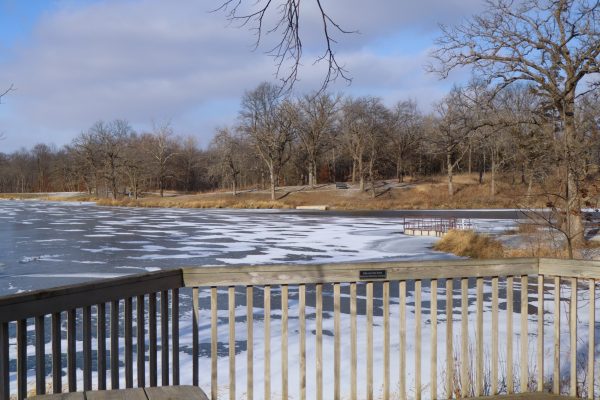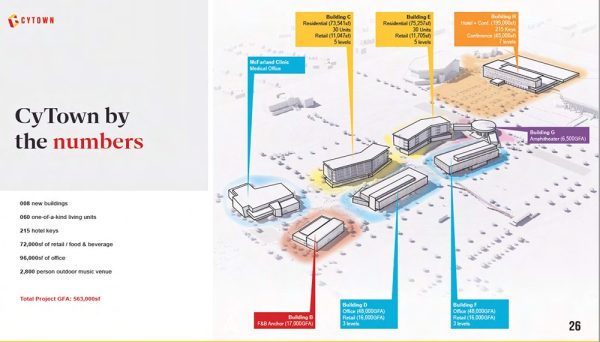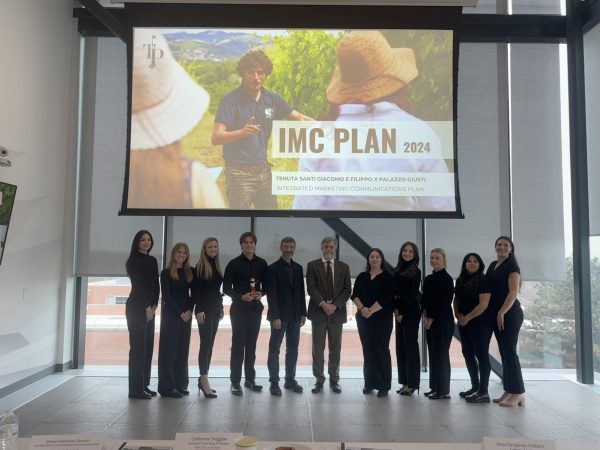Agronomy students experience agricultural research firsthand
Instructors and researchers taught students about the flux towers they use to measure variables directly related to how energy is transferred between Earth’s surface and atmosphere.
Agronomy students visited the Sustainable Advanced Bioeconomy Research (SABR) Farm last week to learn about researchers’ and students’ roles in advancing agricultural sciences.
Brian Hornbuckle, a professor of agronomy, led the class trip to the SABR Farm, where sorghum was recently harvested for a research project run by Andrew Vanloocke, an associate professor of agronomy. Vanloocke recently led this study along with several other undergraduate students and professors.
“The ultimate goal of all the work being done at research farms is to help people make better decisions in the future regarding the management of crops and livestock, or in other words, things that provide food for humans, feed for cattle, fiber, fuel and fossil-fuel replacements,” Hornbuckle said. “The hope is that when students ‘go pro,’ they will benefit from this information.”
Hornbuckle said research farms provide instructors, researchers and students with a variety of experiences and opportunities, such as a place where instructors can take a class to take measurements and see real, live agriculture. They are vital in faculty research projects, and there is a benefit when undergraduate students are involved in that research.
“Research farms are a vital part of our university because they provide the resources (land, equipment) needed to conduct research on crop and animal production systems and give instructors the option to include field experiences in classes,” Hornbuckle said.
The students on the trip met Jared Flater, a postdoc research associate in agronomy, Guler Aslan, a research scientist in agronomy and Jacob Studt, a research scientist in the agronomy department who is also in charge of interns on the research farms.
Vanloocke, Flater and Aslan educated the students about their role as researchers and the tools they use when conducting research, such as Flux towers, which measure variables directly related to how energy is transferred between Earth’s surface and atmosphere.
Instructors also showed students tile drainage wells as a tool that measures nitrogen runoff in the water supply to make sure the crops and soils aren’t losing too much nitrogen.
Emily Kihlstrom, a freshman majoring in agronomy, said she enjoyed seeing current research that professors are working on since it made what she was learning in class more practical.
“ISU research farms can help students realize what ‘niche’ of a subject they want to go into,” Kihlstrom said. “Seeing what professionals do and what they work on can help students find what they wish to do career-wise.”
Mitchel Helm, a freshman majoring in agronomy, said that, as a whole, research farms are vital to students and the university because they help acquire funding and push the agricultural industry forward.
“I enjoyed walking around in the field and having the experts explain what they used the field for,” Helm said. “I feel as a student that the research farm is a good internship opportunity I would be interested in, and I feel like having the professors who are researching new ideas while also teaching will have a lot more to say if they have a field to conduct experiments on.”
Brooklyn Denger, a freshman majoring in agronomy, felt that the research farms allow students to get ideas on how they can make improvements and innovations as well as opportunities that are available to them.
According to Iowa State’s Research and Demonstration Farms website, Iowa State started off as a “model farm school,” meaning it was a place where students could learn about agriculture and scientists and engineers could use the land owned by the university for research and experimentation.
The Iowa State Research farms were established in 1869, originally having only 640 acres in Story County. Today, that number has increased to approximately 16,000 acres at many strategic sites in 20 Iowa counties partnering with local farm associations.
Your donation will support the student journalists of the Iowa State Daily. Your contribution will allow us to purchase equipment, send our student journalists to conferences and off-set their cost of living so they can continue to do best-in-the-nation work at the Iowa State Daily.


